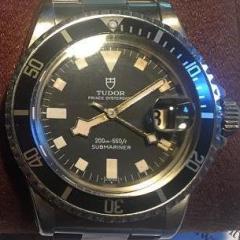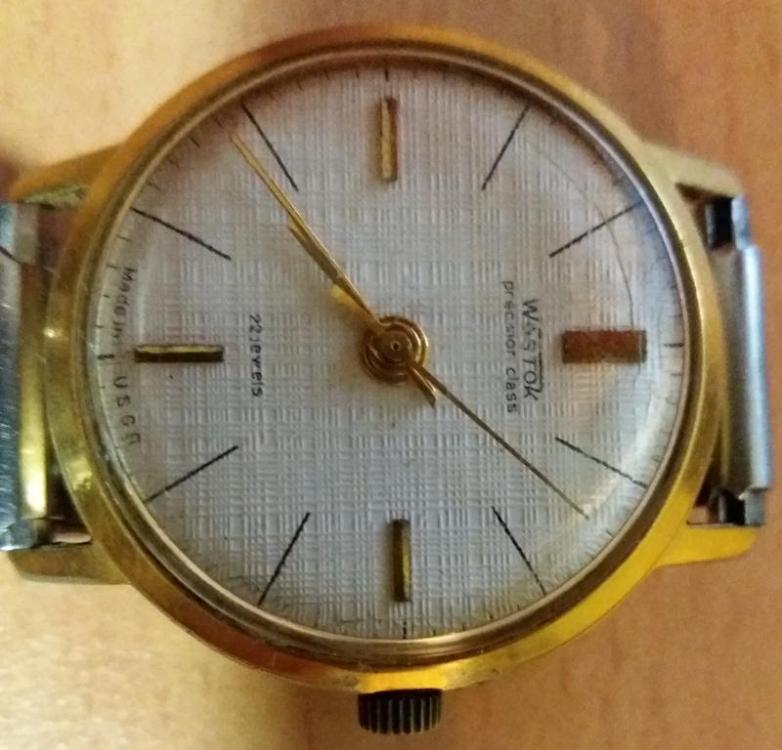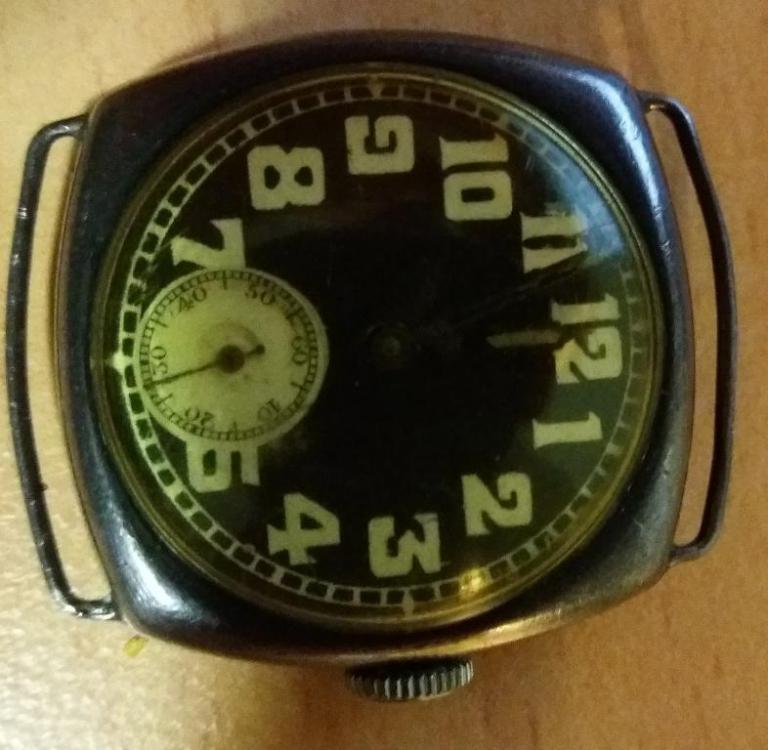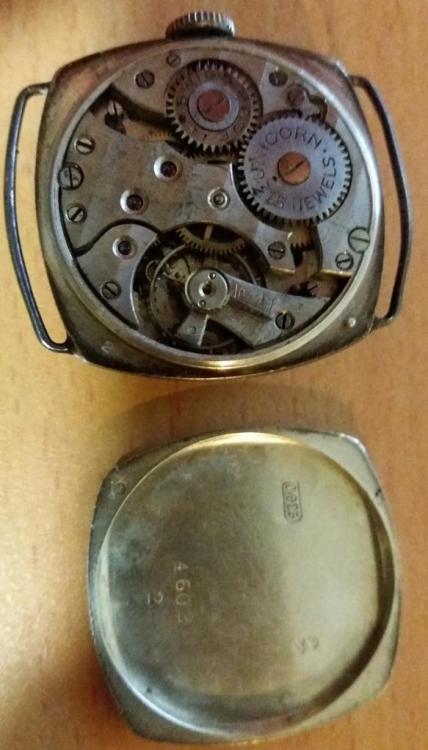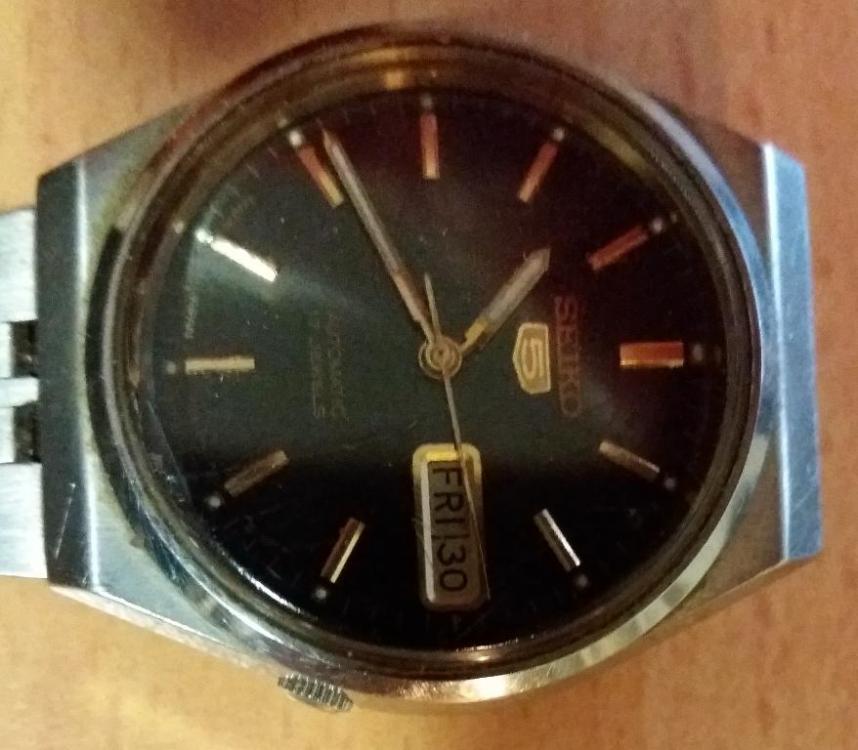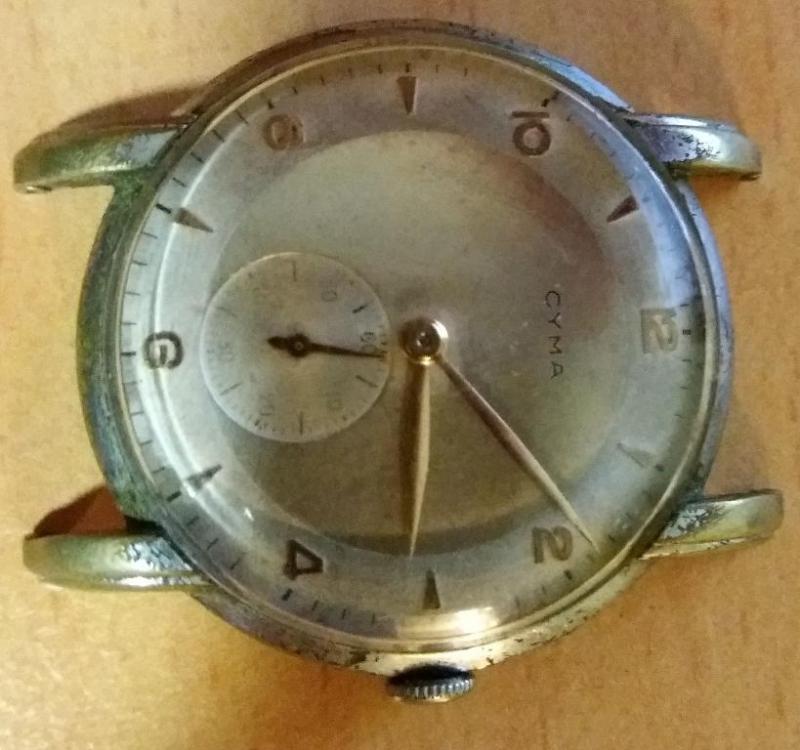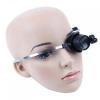Search the Community
Showing results for 'Radium'.
-
Should I be worried about radium?
94marconi replied to danizzz's topic in Chat About Watches & The Industry Here
Radium like asbestos needs to be treated with respect, but both seem to garner a lot of fear mongering. I dabble in antique radio restoration and a lot of radios used asbestos cloth sheets for heat control. the subject of what to do comes up a lot.just like the subject of radioactive paint from days gone by. With asbestos as with the paint, if you leave it alone there is no risk. Only if you start cutting grinding or scraping will you release particles into the air. That is the hazard. With asbestos in radios just leave it alone. or if you feel strongly about it you can spray it with water remove it to a plastic bag seal the bag and be done with it. As clockboy states finger cots a dust mask and store in a sealed container and all is good. If you are not sure if the watch you are working on is radioactive and you do not wish to assume the risk, what little there is, while taking the proper precautions, then pass such work on to some one else. For me, i will probably never work on a radium watch. But if I do, at least I have a clear understanding of what I am up against and how to handle the situation to minimize the risk to myself and others around me. That is the beauty of forums like this with learned members, being informed goes a long way to being safe. Thanks for posting and the heads up... Ron -

Should I be worried about radium?
clockboy replied to danizzz's topic in Chat About Watches & The Industry Here
In this months BHI mag (November 2018) is an article “Radon Hazards of Luminous Timepieces” Understanding Risks From vintage watches. Luminous timepieces really took off during the Great War, when a wristwatch with a luminous dial quickly became regarded as a necessity. The hazards of radium paint were highlighted by the story of the “Radium Girls”, luminous dial painters of the 1920s not only shaped their brushes with their lips ,but painted their teeth, lips and eyebrows with luminous radium paint, consuming significant amounts of radium. When Radium enters the body it results in cancers and many died from this. The problem for us watch repairers is detecting if the vintage watch you are repairing/servicing has a radium dial or hands is not easy. Radio-luminescent paint ceases to glow after a few years, so lack of glow from the paint is not a reliable indication of whether it is radioactive or not. The only way to be 100% sure is to use a radiation detector. Conclusion Radiation and radon gas from radio - luminescent paint a potentially dangerous to watch collectors and repairers. Open storage in living or working areas that contain potential Radio-luminescent paint should be avoided. For those who regularly work on vintage watches should invest in a radon detector. If not sure use a mask when disassembling and store the dials and hands under cover and wear finger cots when handling. -
A5, ok not made for Pioneer, but same movement as the ones made for Pioneer, as Vinn3 says getting hard to find now and collectable. Only other thing I can add is the dial and hands will have radium paint on it, not really an issue unless you service it, but then only an issue if you are not careful about the dust from it and don't wash your hands afterwards.
-
German "Kasper" ladies watch, Art Deco 1940's
Delgetti replied to Endeavor's topic in Your Walkthroughs and Techniques
Very nice, looking forward to the assembling pics. Is that luminous material on the dial and hands? I must admit that I'm quite afraid of radium in watches of that era. -
It will be Radium. Easy to deal with on the hands, not so much on the dial.
-
If that’s Radium on the dial then please take suitable precautions. It’s now recommended that you also ventilate well due to radon gas.
-
.jpg.6225a64433578a11e0218b27c20b13f5.thumb.jpg.d82b0cd1e370f3a3a59a06afa957d184.jpg)
Should I be worried about radium?
TimFitz replied to danizzz's topic in Chat About Watches & The Industry Here
Radium has a half life of 10,000 years probably more. Madam Curie is in a heavy lead & concrete coffin. All the bed side clocks & most watches had radium dials when I was a kid. I'm still alive. We used to take under our blankets and play army. Just be careful & you'll be OK -
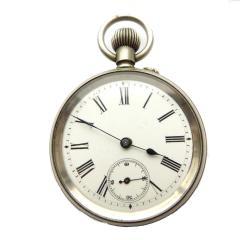
Should I be worried about radium?
p2n replied to danizzz's topic in Chat About Watches & The Industry Here
There isn't a serial number on this one so not sure of the age yet. Looks like it's got a radium dial though How do you safely handle that? Can the radium paint be removed/dissolved? -
I have done a few radium hands before . I remove it by putting it on a tape. That way it won't fly around . But there is always dust particules inside the watch. I will see what i do?
-
One brief exposure to the small amount of Radium from a single watch won't kill or hurt. Who died were the "radium girls", not the owners of the watches they produced.
-
Just be REALLY CAREFUL messing with radium. Put paper down on your work bench, wear gloves and a dust mask. That stuff is really evil, and unless you have a Geiger counter, you have no way of mowing just how dangerous it is. I sound like a Nancy but seriously: be very careful with it!
-
Thinking of servicing this . But am a little afraid how the dial and hands are . Looks like radium in it worth state. Sure can be removed but how can i restore that black look. Numbers are probably radium to.
-
Dial (face) cleaning?
StuartBaker104 replied to 64americandeluxe's topic in Dial / Hands Cleaning and Restoration
This can be a very difficult area, but here is my experience... Enamel dials found on pocket and very old wristwatches can usually be cleaned with all manner of chemicals and rubbing... just beware that some have over-printing with a retailer’s name which may be fragile, as will any luminous markers, which will also likely be radium paint if they are original. Later watches mostly have painted dials which are usually covered with a clear lacquer. Sometimes the printing is on top of the lacquer and sometimes underneath. Sometimes the lacquer can be stripped and replaced without damaging the dial. And here is the experience of someone who has done a lot more of this than I have... http://watchguy.co.uk/cleaning-and-preserving-original-finish-on-dials/ -
Yes unsure if it is radium or not, so will treat it as is it is radium lume. I'm guessing the watch was made around the time Radium was being phased out. Thanks for the tip on Noctilumina, I wasn't aware of that brand and it will now require some further investigation
-
Sometimes i mixed the old lume with new lume. Have used Noctilumina aged pigment that has no glow. Even used some black marker pen to get the lume a little blackish. Or grey as they usually are if the have been around for many years. It's just how much black you use. Take care if they are radium. So you use the radium lume again. Yellow marker pen work great to. But it takes very little to color in the lume.
-
The hands are correct for the watch the reason they where dished rather than open cathedral type hands is that the radium could be applied in larger quantities which meant they glowed brighter and where less prone to cracking and paint loss. The watches are stamped with the military issue number on the case back, case side and painted onto the dial. As with all radium dial watches appropriate precautions should be taken when dealing with them although it will no longer emit any glow from the paint it will still be very much radioactive and a possible hazard to health.
-
I have started this as a new thread as it was taking the original way off topic and I did want to comment; health issues are never unimportant.The original thread that inspired this post is here; https://www.watchrepairtalk.com/topic/903-elma-master-watch-cleaning-machine-wiring-diagramuser-manual/?page=12 There seems to be a lot of difference of opinion regarding the relative risks associated with exposure to asbestos, and as someone who has a small degree of experience in respect to this subject I thought I would put my point of view, although it is not my intention to challenge anyone elses opinion or to claim any particular expertise. For my day job I am a Senior Consultant specialising in waste management for a large environmental consultancy and one of the areas in which we operate, and in which I have had some involvement, is asbestos surveying and remediation management. As a result of the inevitable potential exposure to asbestos that this work implicitly involves the company policy has always been "it takes just one fibre to kill". This is hardly surprising since Health & Safety regulations will hold the Company responsible for any ill effect that can be shown to have been caused by exposure to asbestos in the line of duty unless the Company can demonstrate that it has taken all possible precautions to protect its work force, with the inevitable ensuing litigation. By adopting the "no safe level of exposure" philosiphy the Company is hoping to establish a culture of fear of the stuff that is more designed to keep it out of the courts than it is based on any scientific research (or is that just my cynisism?). However, I don't think that there is anybody out there who would deny that the is a link between exposure to asbestos and a variety of respiratory conditions, some of which can be fatal. There is a discussion here; https://www.watchrepairtalk.com/topic/903-elma-master-watch-cleaning-machine-wiring-diagramuser-manual/?page=12 which examines the "it takes just one fibre to kill" theory and tests it against some statistics (I know, "lies, damned lies, and statistics") and comes up with a strong argument to support the idea that the issues are more associated with prolonged exposure and an accumulation of fibres, rather than a single fibre. It's an interesting read. In the interest of balance though there is also this article; https://www.asbestosnetwork.com/blog/2017/09/how-much-asbestos-exposure-is-harmful-there-is-no-safe-amount.shtml which sets out the view that any exposure should be avoided. My own personal opinion has always tended towards the "no safe level" approach as I am naturally somewhat risk averse. However, 2017 saw the issue come a bit too close to home for me when my eldest brother was diagnosed with mesothelioma, which has in turn been linked (with sufficient confidence for the insurance company to pay out) to a single exposure to asbestos some 40 or so years ago. He is a retired teacher who has never had any direct involvement in the asbestos industry, but who had the misfortune to be in the building at the school he worked at during some holiday refitting. British schools are riddled with the stuff from works carried out between the 1940's and the 1990's (ish) and he spent 1 day in the building without any PPE. Consequently my own risk averse stance has become even more entrenched. The rationale behind my attitude is simple (and applies equally to the Radium issue in which I do have some level of training and competence having spent 5 years as the Company Radiation Protection Supervisor), and goes like this. A single, low dose exposure, can cause health issues which can be serious or even fatal, however the probability is relatively low. Repeated exposure resulting it an ever increasing cumulative dose will result in an ever increasing risk. I can't see into the future to know whether or not or how often I am going to be unavoidably exposed to the hazard, and therefore whether or not he accumulated exposure is ever going to go critical. I therefore treat any exposure as something to be avoided on the grounds that it may help in keeping any potential future unavoidable exposures below the tipping point. In short, there is no safe level of exposure. Stay safe in 2018 people, Happy New Year.
-
You have to inform yourself well before you reassure people about asbestos. Radium is absorbed into your bones and irradiate permanently the bone marrow so you run a lot of risk on leukemia. Make sure you do not get these substances inside, and clean up all the radium dust well, the half-life is 1600 years!
-

Elma Watch Cleaning Machine
jdm replied to SSTEEL's topic in Watch Cleaning Machines / Ultrasonic Cleaners / Case Refinishing
Zero worries. If it was dangerous for final users or inhabitants of these materials we would be all dead now. Just as with Radium, it's the continued (as in many years) exposure (inhalation) in manufacturing environments that kills. -
This popped up on ebay last week as a £50.00 buy it now During the Great war the British military had been issuing pocket watches to serving personnel and hadn't supplied wristwatches, these where instead bought mainly by officers privately for use at the front lines with wristwatches improving and the introduction of the water resistant cases, unbreakable crystals and radium dials the Trench watch was born and became an item of necessity for serving personnel. It wasn't until 1917 that the war department purchased the first batches of wristwatches supplied in two forms the first being a classic trench watch of water resistant case, black dial with radium numerals and unbreakable crystal and the second type being a large cased snap back, black dial with radium numerals all had 15 jewel Swiss movements. These watches where purchased for the purpose of evaluation to assess the usefulness of issuing wristwatches to serving personnel. This watch is of the snap back type and has a unusually large for the period 38mm case made of nickle, the dial is black enamel with radium numerals. All the snap back models have issue numbers that follow the same form a five digit number beginning with a nine followed by a letter M there is also a Broad arrow mark or Pheon crudely stamped on to the back some watches are stamped with two broad arrow marks that touch at the tip this is thought to indicate that the watch had been withdraw from service. The movement in these large snap back models is the same in all known watches where as in the water resistant 1917 watches there is some variation. The movement is a good quality 15 jewel movement and no one has yet been able to identify who manufactured them there are no identifying marks but there is a brevet patent number on the dial side so it may be possible to trace that and establish who made the movements. No one is sure what branch of the armed forces these snap back watches where issued to but it cant have been to front line personnel because having no water resistance would have rendered them pretty useless in the field, many have speculated that they could have been issued to the flying corps because the design mirrors quite closely the pocket watches already issued to them at the time, these snap back models where only issued in 1917 and withdraw from service shortly after, but the water resistant watch became a regular issue watch there after It is however an interesting footnote in the development of the military wristwatch and is amongst the first officially issued and stamped British military watches of the Great War.
-
My only experience with watch work is replacing batteries and bracelets but I'd like to learn to service my own watches. I have a few with issues and would appreciate some guidance on which one to start with ie the easiest one to service, the idea being that if I don't stuff it up I'll gain some confidence to move on to the next one. I have the pictured watches to work on, with the exception of the Seiko they are non goers, the Seiko loses around 4-5 min a day. The unmarked "relic" with the Unicorn movement was found by me as a 5yr old (I'm now 67) while walking home from school, it was promptly taken from me for safe keeping only surfacing when my father passed away around 5 yrs ago, just as well as I seriously doubt it would still be around if I'd been allowed to keep it. I suspect that what is left of the lume is the old Radium type as I can't get a glimmer out of, I have read that this type of lume eventually ceases to work just leaving the Radium behind to continue giving off radiation for the 1000 or so years. With the exception of the Unicorn I took them all to a local watch maker he advised they were not worth repairing. Any suggestions on which one to start with would be welcome - at present I only have basic tools, but will be taking a break from my model engineering hobby to make what I can. Lastly I have a now working Ultrasonic cleaner salvaged from a skip located behind a dentist surgery - is this suitable to use as a parts cleaner ?
-
you know, it's funny you should ask that... I worked for years as a biochemist and we used a lot of P32, so of course I had to learn all the OSHA safety regulations for handling radioactive materials etc... but I'm retired now and I didn't take any of the geiger counters home from the lab... but I understand there's actually an app for that! If you go to http://www.radiation-watch.org, I think they've developed a little plug in device that goes on your iPhone and turns it into a rough kind of geiger counter... I don't think it's very good at picking up gamma, but I'm not sure, I'd have to read the specifications more closely... but it might not be a bad investment if it's not too expensive... I mean, I'm really careful but I do see a lot of the old radium dials, and sometimes the crystals are either smashed up or gone, so it might be good idea to monitor my work area more closely... anyway, I take it from the mostly thundering silence that no one knows how these dial markers are removed????? or perhaps wls1971 is absolutely correct and the numbers are embossed and not removable... so how does International Dial do such a good job reprinting these? I guess the pad printer just prints right over the embossed numbers...? hmmmmm....
- 10 replies
-
- dial
- restoration
-
(and 1 more)
Tagged with:
-
As for being aware of radium dials - yeah, I'm pretty aware of them. check out my user name!!!!!!
- 10 replies
-
- dial
- restoration
-
(and 1 more)
Tagged with:





